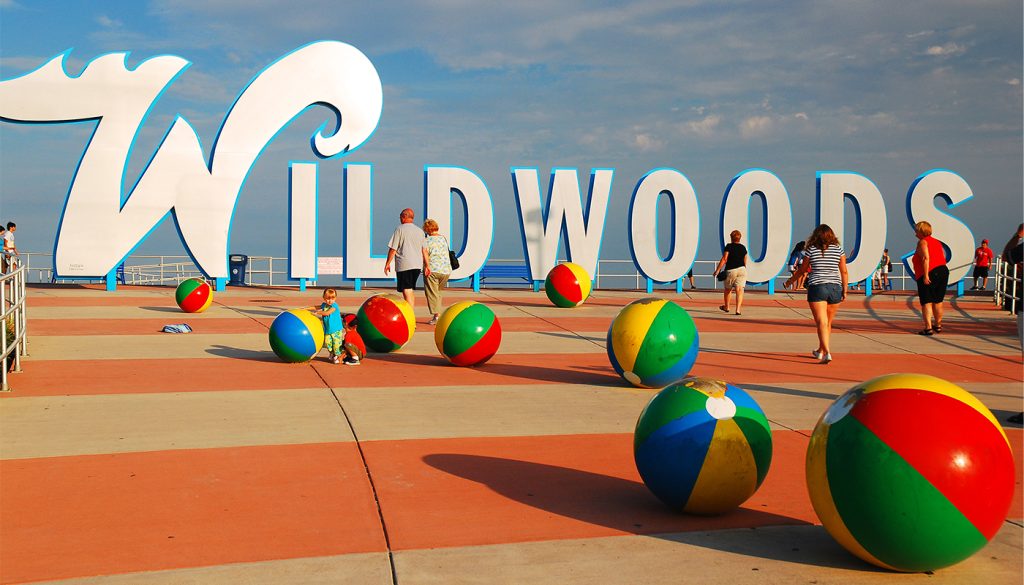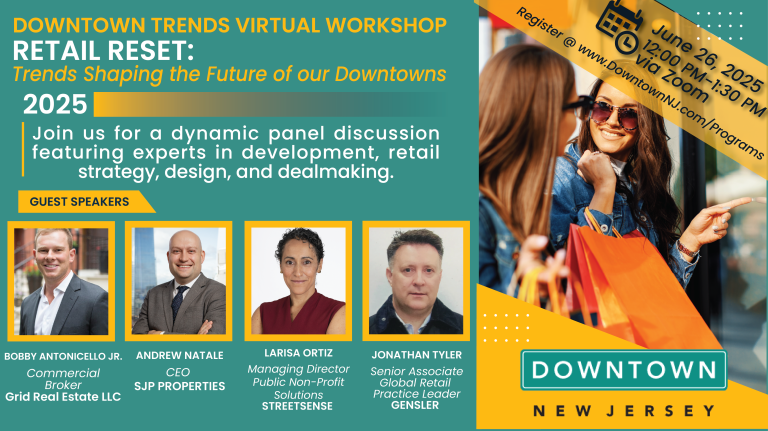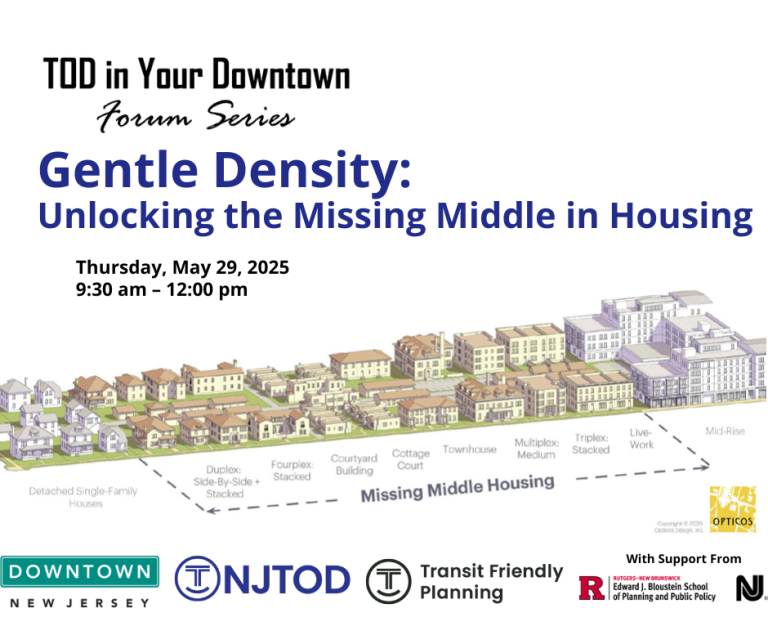4 Key Elements for Creating a Strong Sense of Place
By Michael F. Dwyer, LLA, RLA
Project Manager, Landscape Architecture & Planning, Bohler
April 05, 2024
Amid a wave of redevelopment sweeping across New Jersey’s downtowns, the delicate balance between preserving historical roots and fostering a contemporary identity has become paramount. As communities are revitalized, the challenge lies not only in physical transformations but also in cultivating a strong sense of place. The fusion of a town’s unique history with innovative urban planning is essential to creating environments where both longstanding residents and newcomers alike can forge meaningful connections.
When we talk about sense of place, we don’t just mean the physical surroundings of the environment but also the intangible qualities we associate with it. Think of a place from your childhood where you spent a lot of time. How many details can you recall? Can you pinpoint the sounds and scents? How did it make you feel? Is there an emotional connection that gives this place meaning? Would you have the same experience if you went there today?
As a designer in the placemaking sector, the challenge of creating a sense of place extends beyond aesthetics with form and structure to how we can elicit emotions from the end user. Creating a sense of place begins when the user feels like they’ve arrived and is ultimately achieved when a unique connection is formed.
In public places, this can be accomplished through design with consistent materials or themes, diverse sensory experiences, and of course – people. This can be applied successfully in downtown settings such as streetscapes and pocket parks, and it provides the user with a familiar sensation that forms a connection. This connection triggers specific feelings and positive experiences, which ultimately will keep people coming back.
Here are four key elements that contribute to that experience and intentionally weave character into a community:
1. People
 People use public places for a variety of objectives, including reflection, socializing, and connecting with nature, as well as entertainment. Public areas are intended to attract people, which can be accomplished through well-designed spaces and programming. Annual events, for example, bring a common theme to the community. Bethlehem, Pennsylvania, for example, hosts music and food festivals celebrating the city’s German history. The city’s streetscapes and community spaces immerse visitors in the essence of what makes Bethlehem unique, including the historic steel stacks. Public events like this bring people together to celebrate culture while sharing the city’s story in a meaningful way. Visitors return year after year because of their connection with the experience.
People use public places for a variety of objectives, including reflection, socializing, and connecting with nature, as well as entertainment. Public areas are intended to attract people, which can be accomplished through well-designed spaces and programming. Annual events, for example, bring a common theme to the community. Bethlehem, Pennsylvania, for example, hosts music and food festivals celebrating the city’s German history. The city’s streetscapes and community spaces immerse visitors in the essence of what makes Bethlehem unique, including the historic steel stacks. Public events like this bring people together to celebrate culture while sharing the city’s story in a meaningful way. Visitors return year after year because of their connection with the experience.
2. Signage and Wayfinding
Signage and wayfinding provide a consistent look and feel for a place. This can make moving around the space more comfortable for the user and, in the instance of downtown, help to create a sense of arrival.
Wildwood, New Jersey, successfully implemented the ‘Beach Ball’ theme throughout the city, including signage at the beach entrance and on the pavement at multiple intersections. The beach ball pavement markings serve a thematic purpose while also creating a traffic-calming mechanism, resulting in a safer pedestrian experience.
Businesses and hotels throughout Wildwood also use 50’s-style signage and architecture to create a sense of arrival and community that is unique to this town. Bohler helped to design a one-of-a-kind McDonald’s location at the gateway to Wildwood.
3. Material Choice
 When you first enter and move around a space, materials help to establish a sense of belonging. The choices create an overarching theme and identity. Are the colors warm or cool? Is the pattern bold or simple? Is it historic or new and modern? Weaving in consistent materials throughout downtown spaces ensures the character is carried beyond a single street.
When you first enter and move around a space, materials help to establish a sense of belonging. The choices create an overarching theme and identity. Are the colors warm or cool? Is the pattern bold or simple? Is it historic or new and modern? Weaving in consistent materials throughout downtown spaces ensures the character is carried beyond a single street.
Bohler collaborated with the Borough of Madison, New Jersey, to create the Waverly Place reconstruction conceptual design. During the charette process, the team identified the importance of maintaining the street’s character by using the same materials and layout as the original design. Using specific materials, Madison established a connection to the colonial and traditional streetscape styles, setting the tone for the street and surrounding community. Traditional benches and lamp posts, together with brick running-bond accents, contribute to preserving the borough’s historic character.
4. Sensory
 When it comes to connecting people and locations, sensory is a key element in design. Surfaces, sounds, aesthetics, and even the aroma of a location all play critical roles in creating a sense of place.
When it comes to connecting people and locations, sensory is a key element in design. Surfaces, sounds, aesthetics, and even the aroma of a location all play critical roles in creating a sense of place.
Paley Pocket Park in New York City is a sensory-rich environment. The sound of cascading water and ivy-decorated walls provide a sense of arrival while absorbing the sounds of the city in the background. Visitors can run their hands over the ivy or through the water. The tall tree canopy screens the view of buildings beyond, while low potted plantings within the space create the impression of an understory in a shady wooded area. The park kiosk and nearby restaurants emit a pleasant aroma of food in the air. This area provides a tranquil environment to gather or simply sit and read.
While Paley Park is not a typical community space, the elements that create such a strong sense of place in Paley Park can be applied to downtown communities.
Strengthening New Jersey’s Downtowns
Developing a strong sense of place is an intricate endeavor that involves more than just physical space modification; it also entails intentionally creating places that elicit emotions and connections by focusing on essential factors such as people, signage and wayfinding, material choices, and sensory experiences. As communities are revitalized across the state, designers and planners must balance the preservation of the town’s unique heritage with the creation of a welcoming environment that appeals to both long-term residents and newcomers.
The examples of Bethlehem, Wildwood, Madison, and Paley Pocket Park highlight the success of integrating these elements, showcasing how intentional design can contribute to a lasting sense of place that invites people to return, engage, and share in the cultural richness of their communities. In essence, the fusion of history and innovation in urban planning serves as the foundation for the development of vibrant, meaningful, and enduring places.
Michael Dwyer has over 17 years of experience in the industry and currently serves as a Project Manager on the Planning & Landscape Architecture Design team in Bohler’s Warren, New Jersey office. His duties include managing the preparation and execution of project drawing designs through construction administration. Michael has experience across New Jersey working on projects in various municipalities, including streetscapes, green spaces, public parks, and plazas. He works closely with Township Professionals, Agencies, Committees, and outside consultants to facilitate jurisdictional approvals to achieve design goals.
Bohler provides planning, landscape architecture, and design as an integral part of our land development and urban design approach in public and private sector markets. Our skilled planners and landscape architects work closely with our site civil engineers to develop and evaluate master plans and site design concepts. We focus on understanding a site’s inherent qualities and environmental assets in the context of jurisdictional requirements.
For additional information about Bohler, visit bohlerengineering.com.



